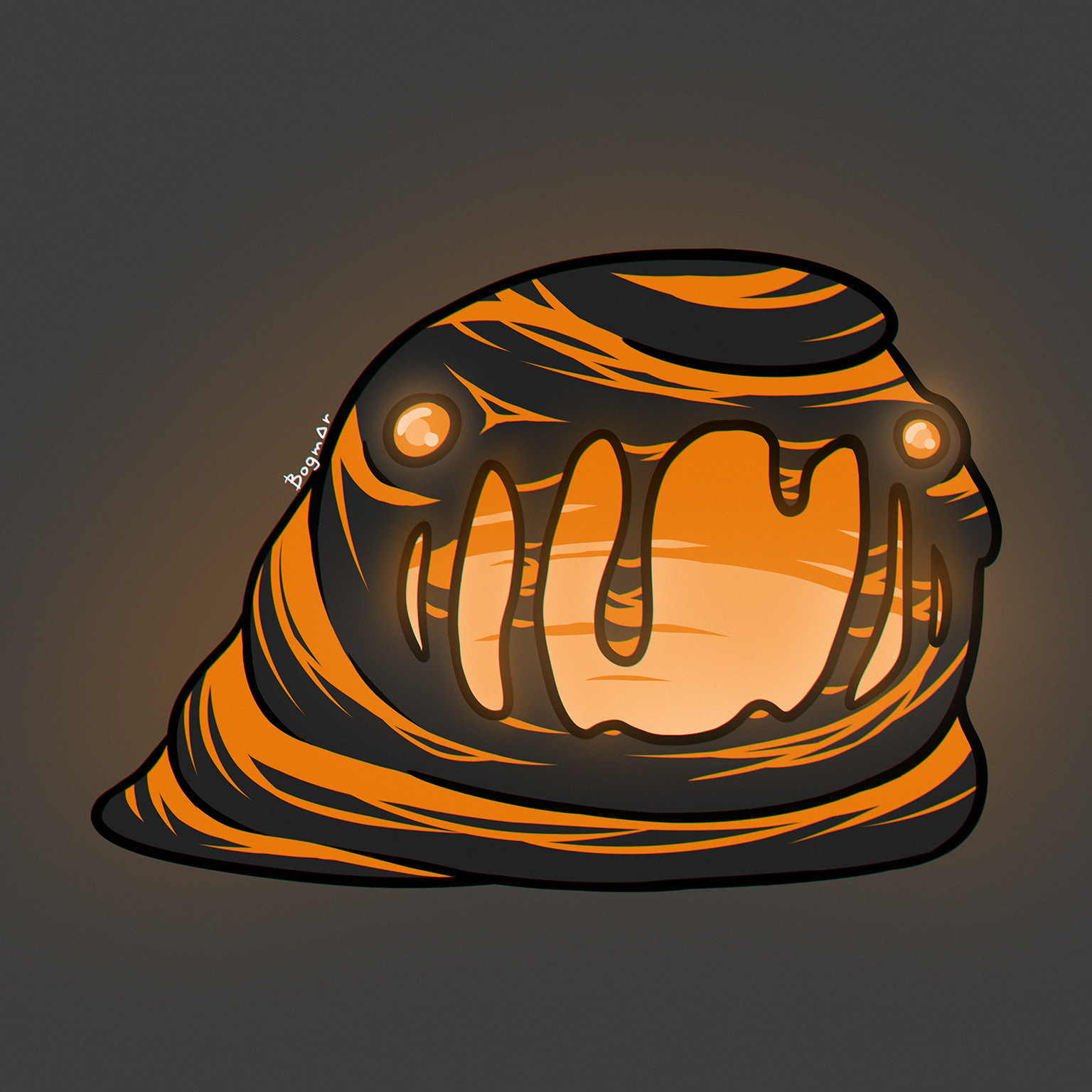 |
| Like this but the size of a person |
Somewhat more of a pressing danger for average folk are rivers slimes, which make their homes on the banks of clear rivers, as one might expect. They are light blue and full of smooth stones but tend to blend in with the flowing water, hiding in wait of animals approaching to drink. Of little threat unless of course, one was simply out washing clothes or fetching water, in places they inhabit people know to keep a pouch of sugar or a jar of syrup with them to distract any slime they might face.
Perhaps more common than river slimes, but much less often encountered, are the vaporous cloud slimes. Their forms usually appear fluffy, despite their sticky, corrosive nature. They are unique in that they float high in the sky nearly all of the time, especially around storms as they await a lightning strike. They feed off of birds and lightning, retaining a charge for many days after being struck as they slowly absorb the energy from it.
 |
| Cloud Slime by Me, using Deep Dream |
More of an actual danger to society, swamp slimes have deep green bodies covered in hairy algae, with flecks of rusty ore suspended within. They are a danger to bog miners, often attracted to campfires or torches and approaching silently until suddenly a poor worker finds themselves being eaten. Nearly all who go into the bog in search of iron go with a pouch of sugar and a pouch of lye (or at the very least a bar of cheap soap), just in case.
Deep underground are molten, red hot blobs thought to be a type of magma slime. Little is known about them as they are hardly ever encountered by humans, but they exist closer to the surface near volcanoes, and some say they tend to carry gems and metals within their scalding mass.
 |
| Lava Slime by Richard Bogmar |
There is tell of a great honey pool that once existed in the Great Hive. One day the honey itself heaved and sloughed up out of the pool, attacking workers and drones until it was finally stopped by an apian hero using a weapon blessed with lightning. Needless to say the honey pool was no longer considered safe, and the bees no longer keep honey in this way.
Slimes are of course mindless, but on very rare occasions one will accidentally consume a source of magic, be it a brittle artifact, magic scroll, or particularly careless wizard, and become itself infused with magical charge. For some reason yet unknown, this rearranges the thing's body into a cubic, crystalline structure that is nonetheless still gelatinous, with motes of misty light swimming within. Alchemists are eager for the flesh of these, and will pay well for it, though they demand it be completely unsullied by dirt or detritus.
 |
| Gelatinous Cube by Jose Oliva |
Each round roll 1d6 for the slime's pseudopodia shape:
- Polypodial: many medium-sized extrusions which the body flows into and between.
- Monopodial: one large extrusion that the body shifts into.
- Lobose: small bumpy reaches that overlap and absorb each other.
- Conical: broad, medium extrusions that expand in an almost fractal pattern.
- Reticulose: branching, unnervingly similar to tree branches.
- Actinopods: spikes that jut out and expand horizontally.
No comments:
Post a Comment